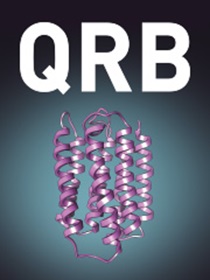量子纠缠:事实与虚构——爱因斯坦到底错了多少?
IF 7.2
2区 生物学
Q1 BIOPHYSICS
引用次数: 14
摘要
爱因斯坦在1927年的索尔维会议上声称量子力学是不完整的,不能描述单个粒子的衍射,这是错误的。然而,纠缠粒子对的爱因斯坦-波多尔斯基-罗森悖论仍然潜伏着它的“幽灵般的远距离作用”。在分子中,量子纠缠可以看作是化学键和激子态的基础。后者在许多生物物理环境中很重要,涉及子系统之间的耦合,其中虚拟激励导致总哈密顿量的特征态,但不涉及单独的子系统。作者质疑是否可以探测原子或光子系统,以证明粒子或光子可以在很远的距离上保持纠缠,并显示爱因斯坦所关心的彼此之间的即时通信。将解离氢分子作为零自旋纠缠系统的模型,其角动量原则上可以探测到。然而,在实践中,自旋是由于与周围的场和物质相互作用而随机化的。同样,目前似乎还没有实验提供明确的证据,证明在没有相互作用的情况下,单光子之间在大距离处仍存在纠缠,或者关于即时(超光速)通信。这迫使我们再次反思爱因斯坦对悖论的真正想法,即对相同准备状态的集合的波函数的概率解释,而不是对单个粒子的陈述。许多粒子的这种准备状态将缺乏量子纠缠的特性,这使得它如此特别,包括不确定性,而安全的量子通信被认为是建立在不确定性之上的。一个例子是Zewail的实验,在NaI分子的相干振动系综的解离中显示出可见的共振,显然违反了不确定性原理。爱因斯坦关于单光子衍射的观点是错误的,类空间反聚束观测最近证明了它们的非局域特性,以及在一点上的观察如何远程影响其他点的结果。相比之下,具有即时超光速响应的远程光子纠缠仍然是一个难以捉摸的,可能部分被误解的问题。作者提出,只有当某些相互作用通过传播速度不能超过光速的场存在时,光子才可能在远距离上纠缠。提出了一个实验来解决这个“相互作用假设”。本文章由计算机程序翻译,如有差异,请以英文原文为准。
Quantum entanglement: facts and fiction – how wrong was Einstein after all?
Abstract Einstein was wrong with his 1927 Solvay Conference claim that quantum mechanics is incomplete and incapable of describing diffraction of single particles. However, the Einstein-Podolsky-Rosen paradox of entangled pairs of particles remains lurking with its ‘spooky action at a distance’. In molecules quantum entanglement can be viewed as basis of both chemical bonding and excitonic states. The latter are important in many biophysical contexts and involve coupling between subsystems in which virtual excitations lead to eigenstates of the total Hamiltonian, but not for the separate subsystems. The author questions whether atomic or photonic systems may be probed to prove that particles or photons may stay entangled over large distances and display the immediate communication with each other that so concerned Einstein. A dissociating hydrogen molecule is taken as a model of a zero-spin entangled system whose angular momenta are in principle possible to probe for this purpose. In practice, however, spins randomize as a result of interactions with surrounding fields and matter. Similarly, no experiment seems yet to provide unambiguous evidence of remaining entanglement between single photons at large separations in absence of mutual interaction, or about immediate (superluminal) communication. This forces us to reflect again on what Einstein really had in mind with the paradox, viz. a probabilistic interpretation of a wave function for an ensemble of identically prepared states, rather than as a statement about single particles. Such a prepared state of many particles would lack properties of quantum entanglement that make it so special, including the uncertainty upon which safe quantum communication is assumed to rest. An example is Zewail's experiment showing visible resonance in the dissociation of a coherently vibrating ensemble of NaI molecules apparently violating the uncertainty principle. Einstein was wrong about diffracting single photons where space-like anti-bunching observations have proven recently their non-local character and how observation in one point can remotely affect the outcome in other points. By contrast, long range photon entanglement with immediate, superluminal response is still an elusive, possibly partly misunderstood issue. The author proposes that photons may entangle over large distances only if some interaction exists via fields that cannot propagate faster than the speed of light. An experiment to settle this ‘interaction hypothesis’ is suggested.
求助全文
通过发布文献求助,成功后即可免费获取论文全文。
去求助
来源期刊

Quarterly Reviews of Biophysics
生物-生物物理
CiteScore
12.90
自引率
1.60%
发文量
16
期刊介绍:
Quarterly Reviews of Biophysics covers the field of experimental and computational biophysics. Experimental biophysics span across different physics-based measurements such as optical microscopy, super-resolution imaging, electron microscopy, X-ray and neutron diffraction, spectroscopy, calorimetry, thermodynamics and their integrated uses. Computational biophysics includes theory, simulations, bioinformatics and system analysis. These biophysical methodologies are used to discover the structure, function and physiology of biological systems in varying complexities from cells, organelles, membranes, protein-nucleic acid complexes, molecular machines to molecules. The majority of reviews published are invited from authors who have made significant contributions to the field, who give critical, readable and sometimes controversial accounts of recent progress and problems in their specialty. The journal has long-standing, worldwide reputation, demonstrated by its high ranking in the ISI Science Citation Index, as a forum for general and specialized communication between biophysicists working in different areas. Thematic issues are occasionally published.
 求助内容:
求助内容: 应助结果提醒方式:
应助结果提醒方式:


